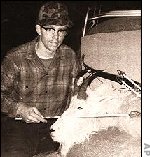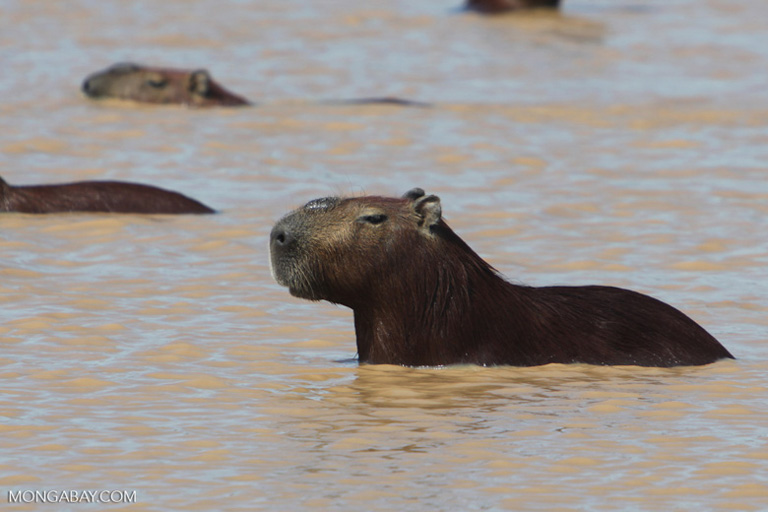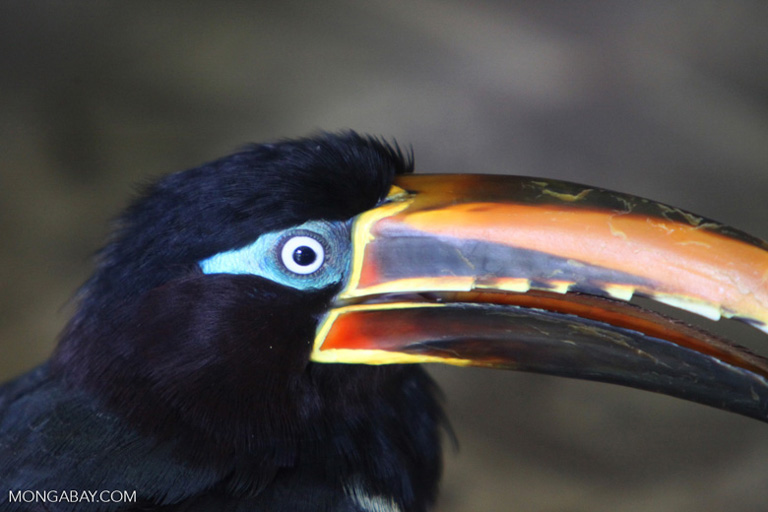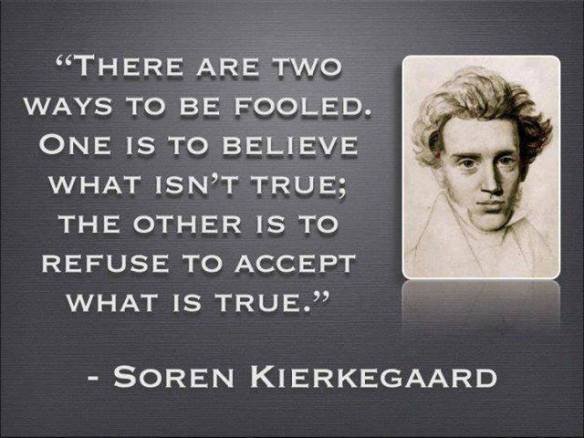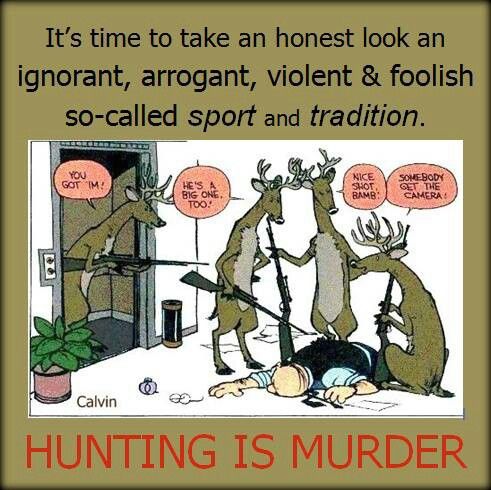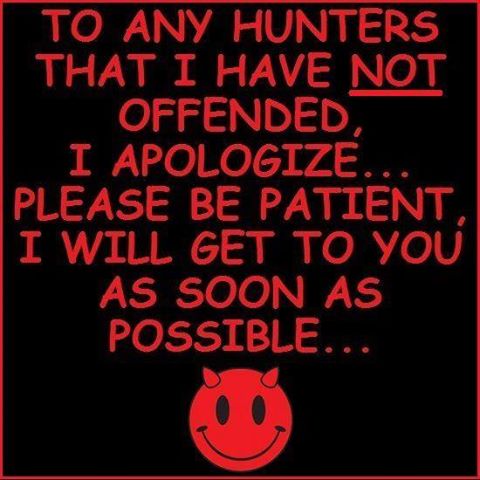People tend to paint all wildlife-killers with a single brush stroke, referring to them all simply as “hunters.” Yet close scientific observation reveals that there are at least five different categories, or sub-species, of the mutation of Homo sapiens known as the North American hunter (Homo hunter horribilis). Oddly, members of some sub-species don’t like to be associated with others. They can’t all be bad apples, can they? Read on…
1) Sport Hunter
This category can actually be applied to all the other sub-species, including the universally maligned trophy hunter, as well as the so-called subsistence hunter, since nearly no one in this day and age really has to kill wild animals to survive anymore. Lately we’ve been hearing from a lot of hunter apologists quick to make a distinction between sport and subsistence hunters. Truth is there’s not all that much difference between the two. Sport hunters and subsistence hunters are often so closely related, they’re practically kissin’ cousins. Rare is the hunter who doesn’t justify his sport by boasting about “using the meat.” By the same token, you hardly ever find one who openly admits to being just a sport hunter.
universally maligned trophy hunter, as well as the so-called subsistence hunter, since nearly no one in this day and age really has to kill wild animals to survive anymore. Lately we’ve been hearing from a lot of hunter apologists quick to make a distinction between sport and subsistence hunters. Truth is there’s not all that much difference between the two. Sport hunters and subsistence hunters are often so closely related, they’re practically kissin’ cousins. Rare is the hunter who doesn’t justify his sport by boasting about “using the meat.” By the same token, you hardly ever find one who openly admits to being just a sport hunter.
But, being by far the largest sub-class, there are obviously plenty of adherents. For reasons known only to them, they like to refer to themselves as “sportsmen” (or “sportswomen”). When not out killing, they are often seen petitioning Congress to enshrine their perceived right to kill animals (meanwhile mocking the very notion that non-human animals have rights).
Tracks: On the rare occasion that these good ol’ boy traditional sport hunters get out of their vehicles (usually a pickup truck with a bench seat, so they can sit on their camo-clad asses three abreast), you’ll find their tell-tale boot tracks weaving along the roadway—a sure sign the Schmidt-swilling hunter has spotted a deer, or needs to take a pee.
Other spoor to watch for: spent shotgun shells and cigarette butts in parking lots, or 16 ounce beer cans and empty fried pork rind bags ejected out the truck window, along forest roadways.
2) Subsistence Hunters
 This category includes the holier than hemp types who use words like “foodie,” and all those others who claim to hunt mainly for food. Subsistence types conveniently ignore the fact that there are 7 billion human meat-eaters on the planet today, and if they all followed their model for “living off the land,” there would be no wildlife left on Earth.
This category includes the holier than hemp types who use words like “foodie,” and all those others who claim to hunt mainly for food. Subsistence types conveniently ignore the fact that there are 7 billion human meat-eaters on the planet today, and if they all followed their model for “living off the land,” there would be no wildlife left on Earth.
Like sport hunters, subsistence hunters do what they do because they want to; they enjoy the “outdoor lifestyle.” But not many self-proclaimed “subsistence” hunters are willing to give up modern conveniences—their warm house, their car, cable TV or the ever-present and attendant “reality” film crew—and live completely off the land like a Neanderthal…at least not indefinitely.
While everyone has a right to feed themselves and their family, what gives them the right to exploit the wildlife is unclear. Sure, all people need some form of protein, yet millions have found a satisfying and healthful way to eat that doesn’t involve preying on others. And they don’t seem to understand that dead is dead and it doesn’t matter to the victim whether their killer eats every part of them or just sticks their head on a wall.
Call: Often overheard uttering feeble catch-words like “management,” “sustainability,” “population control” or “invasive species.” Unfortunately, they never think to apply those same concepts to the species, Homo sapiens.
3) Trophy Hunters
This group can be confused with other “sportsmen,” but though both types are clearly in it for the fun, trophy hunters are obsessed with every aspect of the so-called sport. These are the kind of people who hold “contest hunts” on anything seen as competition, yet ironically are intent on recruiting more hunters, including women and young people, encouraging them to take up the “sport.” Although their professed enemies are predators like wolves and mountain lions, their most dreaded foe are the anti-hunters.
it for the fun, trophy hunters are obsessed with every aspect of the so-called sport. These are the kind of people who hold “contest hunts” on anything seen as competition, yet ironically are intent on recruiting more hunters, including women and young people, encouraging them to take up the “sport.” Although their professed enemies are predators like wolves and mountain lions, their most dreaded foe are the anti-hunters.
The trophy hunters’ fixation with horn curl or antler spread is in fact causing a reversal of evolution in the species whose heads they covet.
Breeding plumage: Camouflage from head to tail; flashy orange vest. Mates primarily with themselves.
4) Sadists
 This category includes bow-hunters, trappers and wolf hunters. Often seen on reality T.V. shows or in homemade snuff-film videos on U-Tube. Hunters who consider themselves in one of the other categories would do well to self-police their kind, lest normal people (non-hunters) think all hunters are sadists who enjoy the act of killing and are turned on by watching animals suffer and struggle under their power.
This category includes bow-hunters, trappers and wolf hunters. Often seen on reality T.V. shows or in homemade snuff-film videos on U-Tube. Hunters who consider themselves in one of the other categories would do well to self-police their kind, lest normal people (non-hunters) think all hunters are sadists who enjoy the act of killing and are turned on by watching animals suffer and struggle under their power.
Habitat: Disgusting personal websites or Facebook pages where they parade around in camo, showing off their evil deeds for anyone who’ll give them the time of day.
5) “Ethical” Hunters
This is the category that virtually all hunters want to be included in. Unfortunately, the phrase “ethical hunter” is an oxymoron, like “humane slaughter,” “virgin mother,” “fair chase,” “free-range poultry” or “friendly neighborhood serial killer.” As with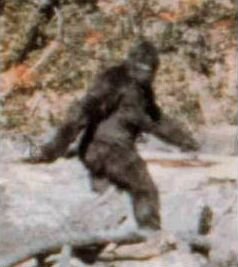 UFOs, Bigfoot and the Loch Ness monster, no one has ever been able to locate one of these mythical phantoms.
UFOs, Bigfoot and the Loch Ness monster, no one has ever been able to locate one of these mythical phantoms.
Spoor: This make-believe subspecies leaves no tracks or scat because, well, they’re fictitious. The only impression they make is in the minds of the easily influenced. There’s simply no way an animal-killer can be considered ethical, unless of course he gives up hunting.


